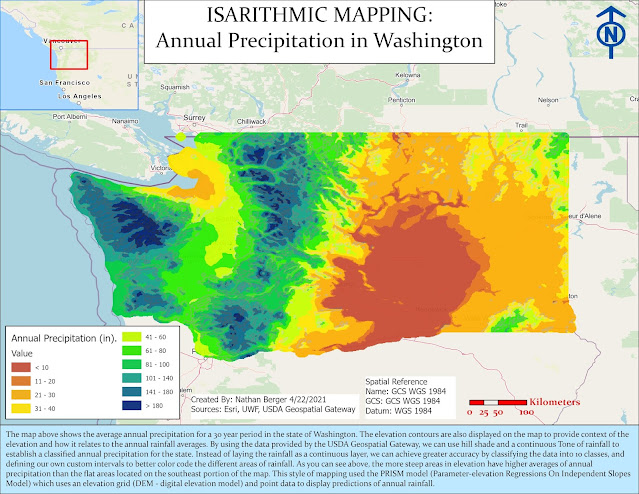Interpolation Techniques for Surface Modeling
Interpolation In GIS
Why use interpolation in GIS?
Because we can do many of the following examples below!
- Derive surfaces of a study area based on elevation points for elevation
- We can derive weather surfaces such as rainfall or snow
- We can look at prediction surfaces to see the effects of the ozone layer on temperature
In this lab, we are using different interpolation techniques such as Spline, IDW, and Thiessen Polygons to derive surfaces for the water quality of Tampa Bay, Florida. These tools create rasters of derived surfaces to explain data distribution across a study area. As you can see, these surfaces all differ greatly from each other, so we must calculate the statistics for each one to determine t which "surface" best represents the water quality (BOD - ) for Tampa Bay, Florida.
We set our grid zones to a cell size of 250 to support our raster extent of the Tampa Bay, Florida area. We are using BOD (Biochemical Oxygen Demand) and MGL (Milligrams Per Liter ) to measure our data points for water quality. We want to determine the areas with low water quality and high water quality based on the dataset.
We start out with a few data points to derive our surfaces...
Look at the 4 results below!
Spline Tension
Spline Reg
Spline is a tool that is calculating the change over distance over data points. there are two types of splines, regularized and tension based.
IDW
IDW is a tool which stands for Interpolated Distance Weighted and it is a tool to calculate the surface for a study area in which it predicts data uses a moving average technique and assumes that each data point has a local influence that diminishes with distance.
Thiessen Polygons
Thiessen polygons are the oldest method of interpolation techniques and is easily done manually to calculate and derive surfaces of a study area. But as you can see, these polygons don't really show us "what areas" have good or bad water quality as specific concentrated data points on the map.
The surface that best explains the water quality for Tampa Bay, Florida is the IDW surface raster.
The main reason for this is because the data for the IDW raster has the least amount of dispersion compared to the other datasets that I calculated when looking at the data distribution and the min and max values. Also, the IDW raster depicts the surface with complete concentrated areas on the map, and accounts for the changes across the Tampa Bay area. The spline tools needed more data to have a more complete surface, and the Thiessen polygons are lacking a visual or more accurate dispaly7 of the water quality surface.
The different interpolation techniques can be found here at...
https://pro.arcgis.com/en/pro-app/latest/tool-reference/3d-analyst/comparing-interpolation-methods.htm
Refer to this awesome video on Interpolation techniques in GIS...







Comments
Post a Comment